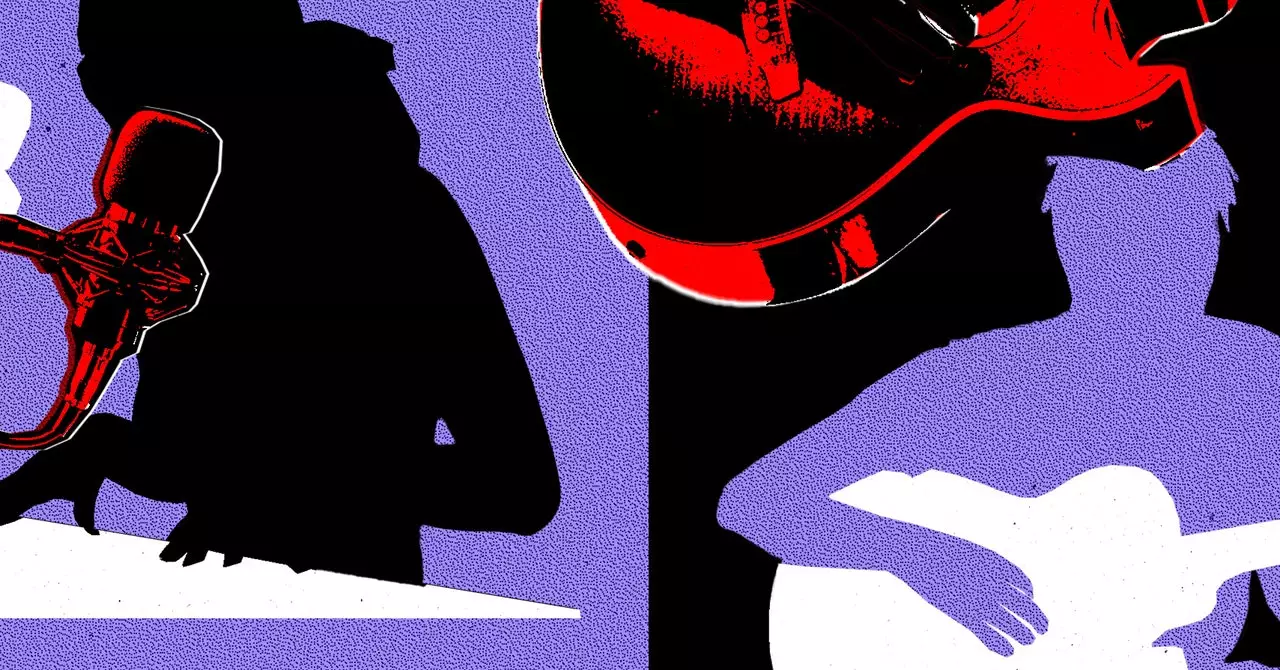As the music industry grapples with the digital age’s rapid advancements, artificial intelligence (AI) emerges as a powerful ally for creators. An array of AI-driven tools has sprung up, going beyond the well-known generative applications. They encompass a variety of functions, including stem extraction, mixing and mastering, and lyric brainstorming. These tools cater to both amateur enthusiasts and seasoned professionals, reflecting a sea change in music production.
Sam Hollander, a notable pop music producer celebrated for his collaborations with artists like Panic! at the Disco and Flavor Flav, draws parallels between the current AI tools and the advent of drum machines in the 1980s. At that time, session musicians faced a similar technological upheaval, forced to integrate programming into their skillsets to remain relevant. Hollander’s insights suggest that musicians today stand at a crossroads where they must either embrace AI’s possibilities or resist its encroachment.
Hollander shares a telling anecdote about a detail-driven UK grime producer who utilized AI tools like Suno and Udio to generate unique funk and soul samples. This producer would creatively distill the generated output by extracting stems using a different AI tool, illustrating a methodological approach to music-making that embraces technology while maintaining a personal touch. Hollander theorizes that the industry is likely to bifurcate into two distinct paths: one that champions artistry in its organic form and another that utilizes AI to augment human creativity.
A Divided Musical Community: Embracing or Resisting AI?
The response to AI in the music industry is mixed, as evidenced by a recent movement among thousands of musicians who signed a letter expressing concerns over AI training. They view it as a critical threat that jeopardizes the livelihoods of creators. This contrasts starkly with those like Hollander, who actively incorporate AI tools into their workflow without sacrificing originality in their music. Hollander’s usage of AI for sample generation and lyric brainstorming signifies a compromise that doesn’t ditch human artistic input.
Despite the advancements in AI, limitations persist. As expressed by Hatcher, another industry professional, AI struggle with aspects of humor, necessitating human intervention to maintain engaging content. Hatcher’s perspective indicates that while AI can contribute to the musical framework, it lacks the nuanced understanding required to evoke genuine responses or connect with audiences beyond surface-level impressions.
The Dichotomy of AI-generated Music: From Shock Value to Ambient Soundscapes
The current landscape of AI-generated music encompasses two contrasting realms—those projects that harness shock factors and those that delve into soothing ambient compositions. Projects like Glorb’s viral SpongeBob rap exemplify how humorous and surprising AI-generated content can engage audiences by pushing boundaries. On the flip side, endeavors that deliver chill and ambient music showcase the versatility of these tools. Creators behind YouTube channels such as Home Alone or ? utilize AI technologies subtly, often leading to deceptively indistinguishable output from human-made compositions.
This shifting paradigm signals a movement from experimental applications of AI that characterized its early adoption to a more finalized state where AI output is becoming mainstream. It indicates a turning point where musical tastes are evolving parallel to technological capabilities. The nuanced approach to AI output, where human creativity remains at the forefront, ensures that the final product does not veer into generic or tedious pathways.
As the music industry continues to evolve with increased reliance on AI, the key lies in collaboration rather than competition. The future may long for musicians who effectively blend innovative AI technologies with their unique artistic vision, crafting pieces that resonate deeply with audiences. The instruments of AI, when used wisely, can enhance the creative process, making it not just a tool for efficiency but an extension of the artist’s identity.
The journey of AI in music production is not merely about machines and algorithms; it signifies a transformative phase that redefines the boundaries of creativity. Whether creators choose to embrace or resist these changes will shape the landscape of music for generations to come. The artistic community must navigate this terrain with both caution and excitement, ready to explore the rich possibilities that artificial intelligence brings to the table.


Leave a Reply
You must be logged in to post a comment.